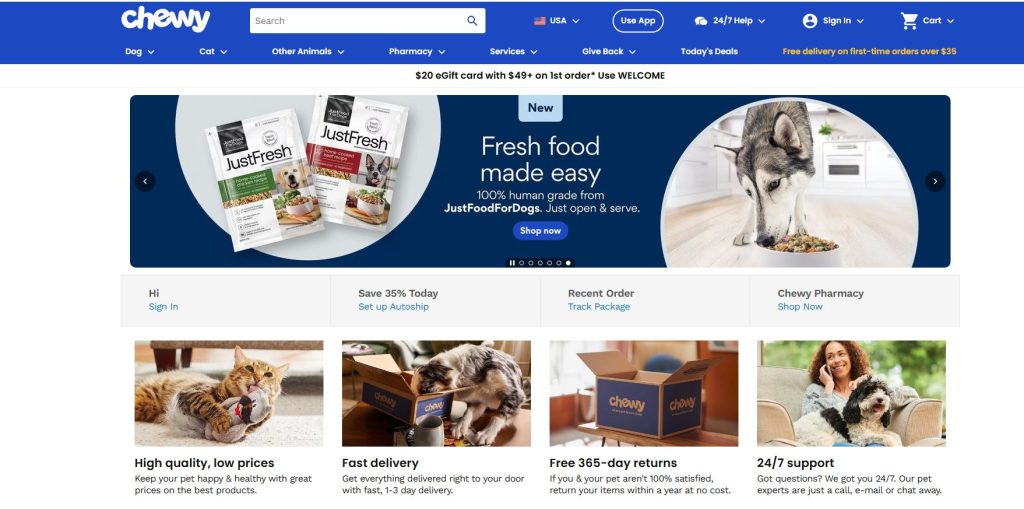Shopify has become one of the most popular platforms for both established businesses and entrepreneurs as e-commerce continues to grow. But it takes more than just setting up a store and crossing your fingers to grow and scale a Shopify store. Everything you need to know to successfully scale your Shopify store will be covered in this guide, from web optimization to utilizing marketing tools and methods.
Table of Content
- Understanding the Difference Between Scaling and Growing
- 1. Create a Strong Brand Identity
- 2. Invest in Research and Product Development
- 3. Optimize your Shopify store design
- 4. Deliver Outstanding Customer Service
- 5. Implement Effective Marketing Strategies
- 6. Utilize Analytics and Data
- 7. Open Up New Sales Channels
- 8. Expand Your Business
- Final Thought
Understanding the Difference Between Scaling and Growing
It’s important to differentiate between growth and scaling before applying any strategies:
Growth:
Increasing revenue at the same rate as expenses (for example, hiring more employees as sales increase).
Scaling:
1. Create a Strong Brand Identity
A strong brand identity is essential for a Shopify store to be successful. A clear and compelling brand sets you apart from competition and builds trust with your target audience.
Key Steps for Building a Brand:
- Define your unique selling proposition (USP): Identify what differentiates your products from others on the market. Is it quality, cost, sustainability, or innovation?
- Create a Memorable Logo and Visuals: Create a logo and connected graphic assets using platforms like Canva or by hiring a professional designer.
- Create a Brand Story: Share your story and mission. Brands such as Gymshark have effectively used storytelling to engage with their target audience.
2. Invest in Research and Product Development
Selling innovative, high-quality products is essential for long-term success. To keep your product lineup up-to-date investigate the desires and requirements of your target audience.
Strategies for Product Development
- Use Customer Feedback: Analyze reviews, surveys, and customer support interacts with to find areas for improvement.
- Source High-Quality Materials: Work with trustworthy suppliers to assure product quality.
- Increase Your Product Range: Gradually introduce additional products to boost average order value (AOV).
Example:
The Shopify store Pura Vida Bracelets is constantly expanding its product line to include rings, necklaces, and other items to appeal to its loyal customers.
3. Optimize your Shopify Store Design
Your store’s design is important for converting visitors into customers. A well-designed website is both visually appealing and user friendly.
Best Practices in Store Design:
- Choose a Responsive Theme: Use Shopify themes like “Dawn” or buy premium options from platforms like ThemeForest.
- Streamline Navigation: Simplify your menu and categorize products properly to help customers discover what they need.
Highlight Reviews and Testimonials: Using social proof, such as customer reviews or user-generated content, boosts credibility.
Example:
The Shopify store Allbirds enhances the user experience by combining minimalist design with interesting product descriptions.
4. Deliver Outstanding Customer Service
Customers who are happy with your store are more likely to return and refer others to it. Great customer service differentiates your company.
Tips for Exceptional Service:
- Provide a Variety of Support Channels: Provide phone, email, and live chat assistance.
- Establish a Simple Return Policy: Trust is increased by having return policies that are easy for customers to understand.
- Use Chatbots for Quick Responses: Gorgias and other similar tools facilitate automated customer service.
Example:
Chewy, a Shopify store, is well known for providing personalized customer service, which has led to a high level of customer loyalty.
5. Implement Effective Marketing Strategies
Marketing is the driving factors behind the success of every e-commerce business. A combination of organic and paid marketing methods can help you reach a larger audience and improve revenue.
Key marketing strategy:
a) Search Engine Optimization (SEO)
Optimize your product pages and blog posts for SEO to increase organic traffic.
- Include important keywords in the product titles, descriptions, and meta tags.
- Create blog posts that address client pain problems.
b. Social Media Marketing
Use platforms such as Instagram, TikTok, and Pinterest to graphically promote your products.
- Collaborate with influencers to reach your target audience.
- Use shoppable posts to streamline the purchasing process.
Example:
MVMT Watches uses Instagram to promote lifestyle imagery that resonates with their target audience.
Email Marketing
Use email campaigns and create a mailing list to build a relationship with your customers.
- Send out product recommendations, welcome emails, and reminders for abandoned carts.
- Shopify easily integrates with Klaviyo and other tools for advanced email automation.
d. Paid Advertising
Spend money on Instagram, Facebook, and Google sponsored posts.
- Utilize Shopify’s integrated tools to monitor the effectiveness of your ads.
- Customers who explored your website or abandoned their carts can be retargeted.
6. Utilize Analytics and Data
Making data-driven decisions is essential if you want to grow your Shopify store. Keep tabs on your performance indicators and pinpoint areas that require improvement.
Analytical Tools:
- Google Analytics: Gives information on user behavior and website traffic.
- Shopify Reports: Use your Shopify dashboard to examine sales, conversions, and customer information.
- Heatmaps: Programs such as Hotjar show how users engage with your website.
Example:
MeUndies, a Shopify business, enhanced its product offerings and website design to increase conversions using data analysis.
7. Open Up New Sales Channels
In order to reach more customers, scaling your Shopify store entails investigating other sales methods.
Top Channels for Sales:
- Marketplaces: To reach a wider audience, list your products on Etsy, eBay, or Amazon.
- Social Media Platforms: Using Instagram or Facebook Shops.
- Physical Stores: Think of collaborating with retailers or opening pop-up stores.
Example:
Heatonist is a brand that sells through its Shopify store, retail locations, and subscription box partnerships.
8. Expand Your Business
Scaling operations is essential to effectively managing rising demand as your company expands.
Important Things to Consider:
- Automate Inventory Management: Monitor stock levels with apps such as Stocky.
- Fulfillment outsourcing: Collaborate with third-party logistics (3PL) companies such as ShipBob.
- Hiring a Team: When necessary, bring in specialists for operations, marketing, and customer support.
Example:
The Shopify store Bombas expanded its operations by concentrating on its key areas of expertise and outsourcing fulfillment.
Final Thought
Growing and scaling your Shopify store requires a combination of creativity, planning, and determination. You may advance your e-commerce company by investing in marketing, creating a powerful brand, optimizing your store, and using analytics. Get inspiration from the tools and examples in this guide to develop a successful plan.
Remember that challenges will arise and that growth is not linear. Keep going to be flexible, pay attention to your clients, and improve your strategies on a regular basis. Scalability and sustainable development are possible for your Shopify store with the proper strategy and scalability.
Join us as you begin your Shopify journey
We are e-commerce specialists and Shopify Partners. Get in touch with us if you need assistance with Shopify, need a whole website built, or have any other general questions.









